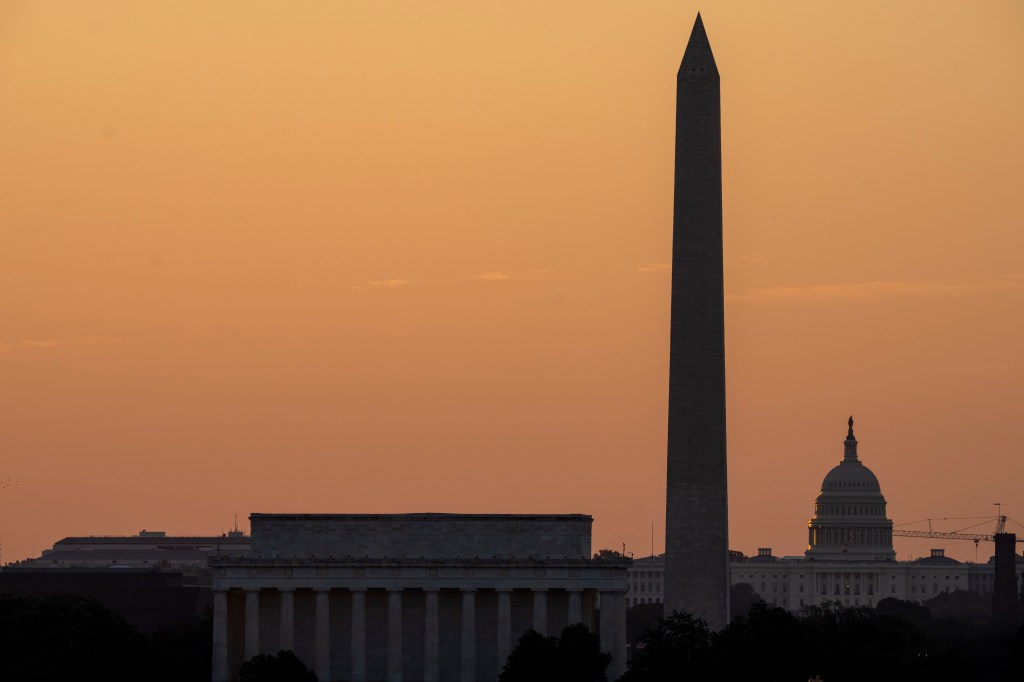A relentless heat wave continued to bake most of the United States on Friday, with numerous areas expected to see record-breaking temperatures and forecasters warning there would likely be little relief through the weekend for most areas.
The steamiest conditions on Friday were expected in parts of Ohio and Indiana, where heat indexes were likely to soar past 100 degrees Fahrenheit and remain there most of the day. But the Midwest was not the only area being baked, as heat and excessive heat warnings and advisories has been issued across the northeast, the mid-Atlantic and in some western states.
Idaho officials said two people in their 60s have died of heat-related causes — the state’s first heat-related deaths of the year. Health officials did not release additional information about the victims Friday, including where they died.
Millions of residents across the country have had their lives disrupted by days of unusually high temperatures.
In Michigan, utility crews from several states were working feverishly Friday to restore power to thousands of suburban Detroit customers, two days after severe storms knocked out their power, leaving residents suffering amid a heat wave expected to linger through Saturday.
About 12,000 homes and businesses remained without power Friday afternoon in Oakland County, a suburban area north of Detroit hit hard by Wednesday night’s storms that cut power to about 75,000 homes and businesses at its peak, said Brian Calka, DTE Energy’s vice president of distribution operations.
Between 500 and 600 crew members from utilities in Ohio, Indiana and Illinois were working with about 1,000 DTE Energy utility workers and another 1,000 tree-trimming contractors to get the power back on amid the heat. Calka said the utility’s goal is to get the power back on for all its customers by late Friday or early Saturday.
Utility crews were working 16-hour shifts to get the power back on and they were urged to deal with the heat by taking more breaks because they are wearing jeans, long-sleeved shirts, rubber gloves and hardhats for their work, Calka said.
“They are working in very, very tough conditions,” he said.
Among the Michigan residents feeling the heat is Jody DeRusha, whose home in the village of Beverly Hills about 10 miles north of Detroit lost power Wednesday night and was also struck by part of a maple tree toppled by high winds in that night’s severe thunderstorm. She has lost everything in her refrigerator, including a large amount of frozen beef and some halibut and fresh walleye.
“We’ve lost our power before and in the freezer if you don’t open it you’d have about 48 hours, but in this heat, no. In 24 hours the refrigerator was done. Trash day is Monday so I’ll empty it out then,” DeRusha said Friday.
She and her daughter are armed with flashlights and they have been sleeping in their home’s basement, which she said is 10 to 15 degrees cooler than the home, which is stuffy and hovering at about 80 F.
DeRusha, a contract logistics worker for a car transportation company, said she’s been spending time in her car to savor its air conditioning while also recharging her cellphone.
It was too hot for some people for kayaking, at least during peak temperatures. Chad Brennan, who operates Sunrise Kayaking just outside Columbus, Ohio, limited groups to morning and evening trips even though it meant turning away customers.
“If you’re doing anything physical like paddling a kayak, just even anything remotely strenuous on days like this, it’s pretty exhausting,” he said Friday.
This month’s sizzling daytime temperatures were 35 times more likely and 2.5 degrees F hotter because of the warming from the burning of coal, oil and natural gas — in other words, human-caused climate change. That is according to World Weather Attribution, a collection of scientists that run rapid climate attribution studies that have not been peer reviewed.
The U.S. last year experienced the most heat waves since 1936, experts said. An Associated Press analysis of Centers for Disease Control and Prevention data found that the excessive heat contributed to more than 2,300 U.S. deaths, the highest number in 45 years of records.
The excessive heat wasn’t the only weather-related issue in some states.
Several small-town tourist meccas in northern Minnesota continued to be inundated by floodwaters after a deluge of rain earlier this week, prompting the closure of major roads and leaving a costly trail of damage.
On Friday, Minnesota Gov. Tim Walz traveled to St. Louis County, where people in one town paddled through flood-ridden streets in small boats and officials estimated the floods had caused at least $50 million in damage and prompted the closure of more than 40 roads.
At a news conference in Biwabik, Walz said he expected a presidential disaster declaration might be imminent, but the damage hadn’t yet reached the necessary threshold. Walz encouraged people to keep track of damage, which could help the state secure federal assistance.
To the west, several South Dakota campers who’d gathered to see a now-canceled race at Huset’s Speedway near Sioux Falls were rescued by boat Friday, Minnehaha County Chief Deputy Jeff Gromer said. No one was injured. Gromer warned against driving on gravel roads, through flooded streets or past barricades in the wake of flooding.
With little relief expected in the coming days, several events were being postponed or rescheduled due to the extreme heat.
Among them was the “Blazing Paddles Paddlefest” on Cleveland’s Cuyahoga River, which was planned for Saturday. Organizers called off the event because of temperatures that are expected to reach the mid-90s. Much of Ohio has been under heat warnings all week although a bit of relief was expected on Sunday as temperatures drop back to normal in the Great Lakes region.
Shipkowski reported from Toms River, N.J. Associated Press writers from across the country contributed, including Summer Ballentine, Lisa Baumann, Rick Callahan, Patrick Orsagos and John Seewer.


